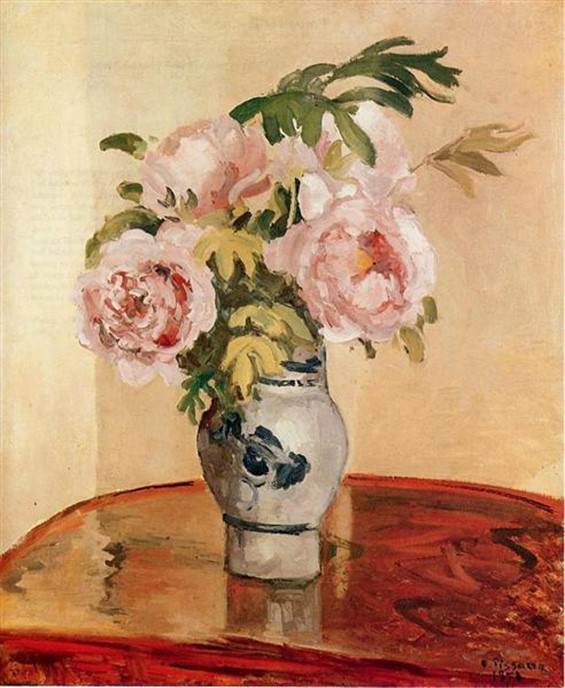
Pink Peonies, 1873, Oil on Canvas, 73 x 60 cm, Ashmolean Museum, Oxford, UK
https://www.wikiart.org/en/camille-pissarro/pink-peonies-1873
The flower that smiles to-day / To-morrow dies; / All that we wish to stay / Tempts and then flies. / What is this world’s delight? / Lightning that mocks the night, / Brief even as bright. / Virtue, how frail it is! / Friendship how rare! / Love, how it sells poor bliss / For proud despair! / But we, though soon they fall, / Survive their joy, and all / Which ours we call. / Whilst skies are blue and bright, / Whilst flowers are gay, / Whilst eyes that change ere night / Make glad the day; / Whilst yet the calm hours creep, / Dream thou—and from thy sleep / Then wake to weep. Everything is ephemeral and transitory for Percy Shelley like bouquets of flowers… like Camille Pissarro Flower Arrangements! Could this be the reason why the artist painted so few Still Life Paintings of Flowers? Was he afraid of all hopes, desires, and delights the world has to offer are short-lived and doomed to fade away? https://www.poetryfoundation.org/poems/45133/mutability-the-flower-that-smiles-to-day and https://interestingliterature.com/2017/07/10-of-the-best-poems-about-flowers/
Camille Pissarro was the only painter to exhibit in all eight Impressionist exhibitions organized between 1874 and 1886. He became a pivotal artist and mentor within the movement, and he is best known for his landscapes and his images of the day-to-day life of French peasants. https://www.theartstory.org/artist/pissarro-camille/life-and-legacy/#biography_header
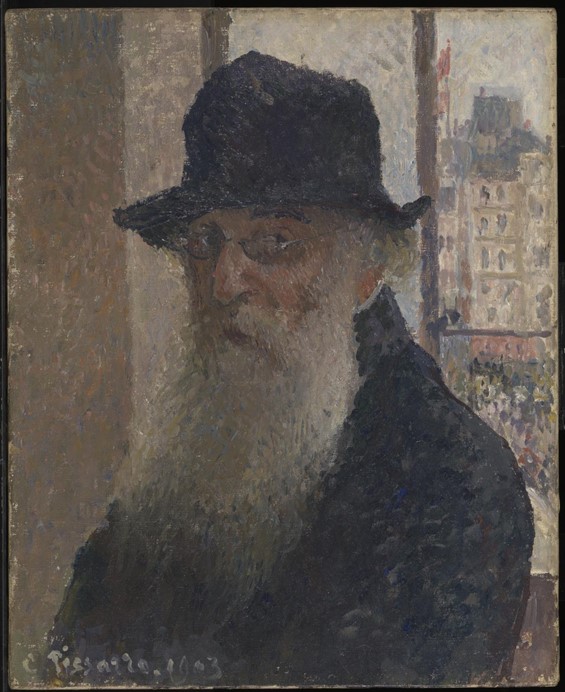
Self-Portrait with Hat, 1903, Oil on Canvas, 41×33 cm, Tate Britain, UK
https://commons.wikimedia.org/wiki/File:Camille_Pissarro_-_Self-portrait2_-_Tate_Britain.jpg
Jacob Abraham Camille Pissarro was born and raised in St. Thomas in the US Virgin Islands, then the Danish West Indies. His parents were merchants of modest means, but in 1842, young Pissarro was sent away to a boarding school in Passy near Paris, France, where he was introduced to the arts and encouraged to draw directly from nature and to use direct observation in his drawings, empirically rendering each object in its truest form. Pissarro returned to St. Thomas to immerse himself in the family business; however, he got quickly tired of mercantile pursuits and upon meeting the Danish painter Fritz Melbye, in the early 1850s, he abandoned the family business, following his Dutch friend to Caracas, Venezuela, and committing himself to becoming a painter. https://www.theartstory.org/artist/pissarro-camille/life-and-legacy/#biography_header
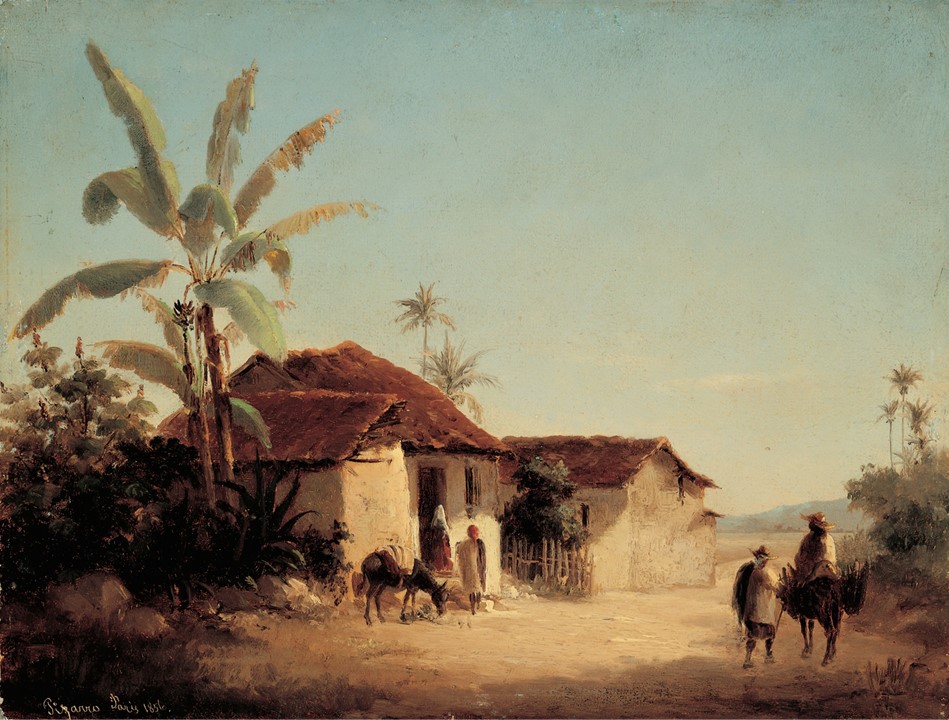
Tropical Landscape with Farmhouses and Palm Trees, 1856, Oil on Cardboard, 24.8×32.7 cm, National Art Gallery, Caracas, Venezuela
https://commons.wikimedia.org/wiki/File:Camille_Pissarro_-_Paisaje_tropical.jpg
By 1855, Pissarro had returned to Paris, where he was exposed to the artwork of Eugène Delacroix, and Realist landscapists like Jean-Baptiste-Camille Corot, Gustave Courbet, and Jean-François Millet. Largely if not entirely self-taught at the time, Pissarro started taking classes at the Academie Suisse in 1859 where he met Cézanne, one of his closest lifelong friends. In 1861, Pissarro registered as a copyist at the Musée du Louvre, and around this same time, he met Julie Vellay, the daughter of a vineyard owner in the Burgundy region. He got married in London in 1871 and became the caring father of eight children. https://www.theartstory.org/artist/pissarro-camille/life-and-legacy/#biography_header
Pissarro began submitting to the Salon in the late 1860s with landscape paintings reflecting his profound knowledge of and exposure to the compositional techniques of the eighteenth-century French masters. However, spending time and painting en plein air in Louveciennes, an area much favoured by the Impressionists, Pissarro’s style gradually changed. He focused on light effects and atmospheric conditions created by the change of the seasons developing a pure, mature Impressionist style. As he grew older, he worked hard to keep his art avant-garde and relevant by testing new theoretical concepts like the Pointillist technique. https://www.theartstory.org/artist/pissarro-camille/life-and-legacy/#biography_header
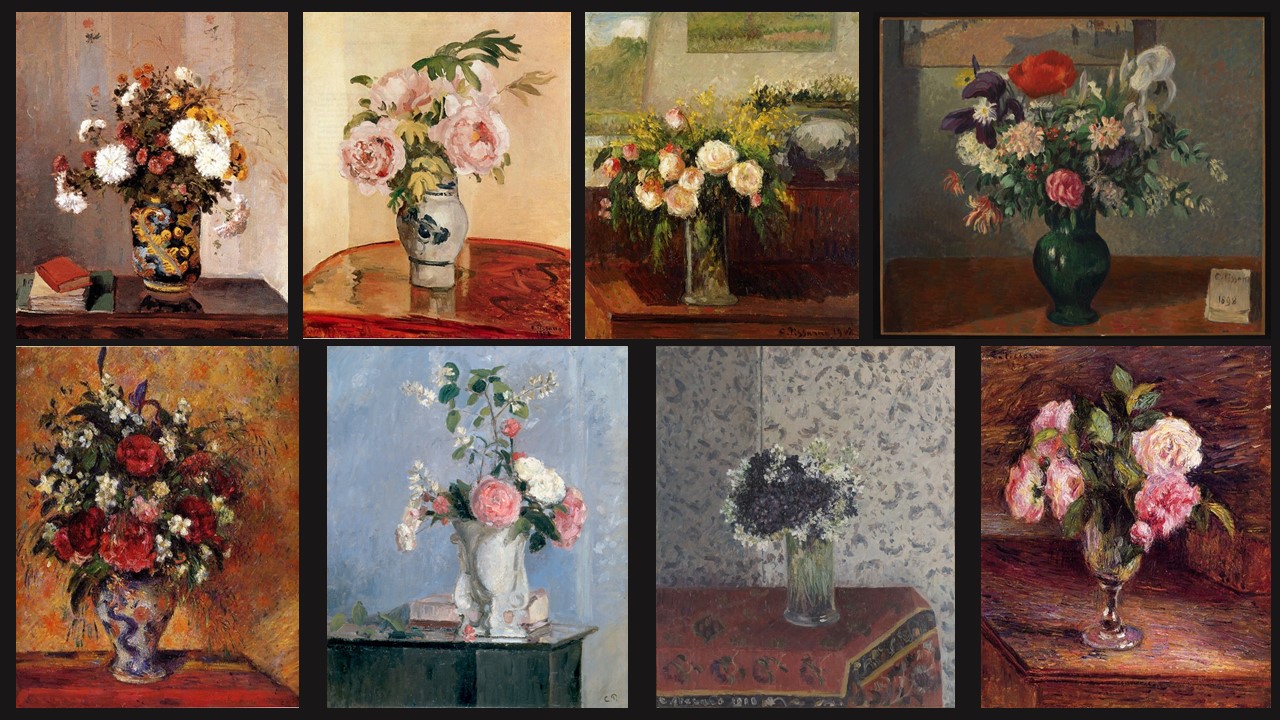
Medley of Still Life Paintings of Flowers
In 2005, at The Museum of Modern Art in New York, the Exhibition “Pioneering Modern Painting: Cézanne and Pissarro, 1865–1885” placed Camille Pissarro, the artist pretty much behind every art movement of the 19th century, in the same league as Paul Cézanne, the artist whose art will define the 20th century. Pissarro’s landscapes are indisputably important… but, I like to focus on Pissarro’s few Still Life paintings… discover his modernist approach, notice his ability to manipulate colour for a “truer” visual image, and relish at his direct, unadorned approach to his subject matter.
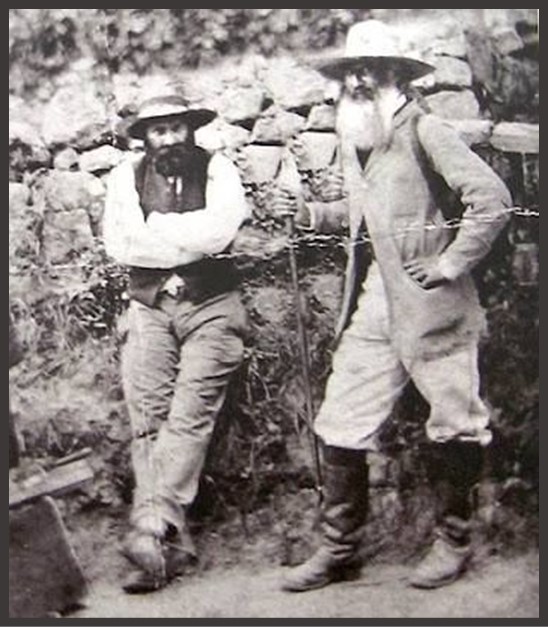
To end this short presentation I will quote Paul Cézanne, who three years after Pissarro’s death, identified himself in a retrospective exhibition, as “Paul Cézanne, pupil of Pissarro.” https://www.theartstory.org/artist/pissarro-camille/life-and-legacy/#biography_header and https://www.haberarts.com/cezannep.htm
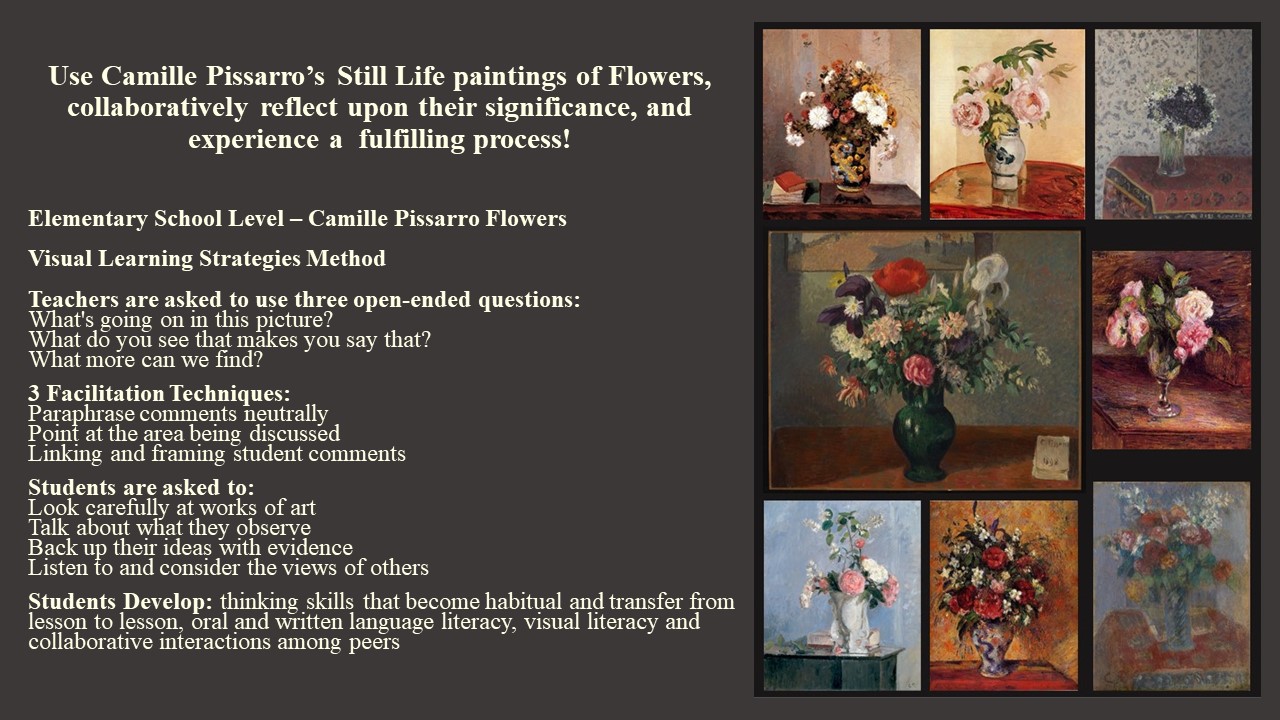
When I teach Impressionism… I like to stress how important Pissarro’s Still Life paintings of Flowers are! I use Visual Learning Strategy Questions to help my students reflect upon their significance, and experience a process of enduring understanding!
For a PowerPoint of Camille Pissarro’s paintings of Flowers, please… Check HERE!